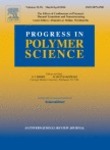Journal
Please choose volume & issue:
-
Computational modeling of heterogeneous Ziegler-Natta catalysts for olefins polymerization
Abstracts:Since 1963, when Karl Ziegler and Giulio Natta were jointly awarded the Nobel Prize for their discoveries of the catalytic polymerization of olefins with Ti-chlorides and Al-alkyls, heterogeneous Ziegler-Natta (ZN) catalysts have become the main catalysts for the industrial production of polyolefins. Despite of the relevance of ZN catalysts for the large-scale production of polyolefins, a clear mechanistic understanding of these catalysts is still incomplete due to the elusive nature of the active site structures. Over the last two decades, researchers have used density functional theory (DFT) methods to clarify the polymerization mechanisms and to identify the nature of the active sites, unraveling the influence of supports, cocatalysts, and the effect of internal and external donors on the polymerization processes. Major efforts were dedicated to understanding the origin of stereoselectivity in α-olefin polymerization as well as the termination reactions mechanisms, and the role that impurities can play in heterogeneous ZN catalysis. Here, we review the DFT studies on heterogeneous ZN catalysts and suggest promising areas for future research.
-
Photopolymerization in dispersed systems
Abstracts:Zero-VOC technologies combining ecological and economic efficiency are destined to occupy a growing place in the polymer economy. Today, Polymerization in dispersed systems and Photopolymerization are the two major key players. The hybrid technology based on photopolymerization in dispersed systems has emerged as the next technological frontier, not only to make processes even more efficient and eco-friendly, but also to expand the range of polymer products and properties. This review summarizes the current knowledge in research relevant to this field in an exhaustive way. Firstly, fundamentals of photoinitiated polymerization in dispersed systems are given to show the favourable context for developing this emerging technology, its specific features as well as the distinctive equipment and materials necessary for its implementation. Secondly, a state-of-the-art and critical review is provided according to the seven main processing methods in dispersed systems: emulsion, microemulsion, miniemulsion, dispersion, precipitation, suspension, and aerosol.
-
Addition polymerization of functionalized norbornenes as a powerful tool for assembling molecular moieties of new polymers with versatile properties
Abstracts:This comprehensive review surveys recent research trends in the addition polymerization of functionalized norbornenes for the macromolecular design of high performance materials in terms of catalyst activity, monomer reactivity, modifications and potential applications of addition polynorbornenes bearing functional groups. The structure of addition polynorbornene backbones is responsible for their high thermal resistance and chemical stability. In order to impart desired properties to the polymers, various functional side groups can be incorporated into the monomer units by the Ti-, Ni-, or Pd-catalyzed polymerization of norbornenes, which are available via cycloaddition reactions or norbornadiene-2,5 modifications. Based on the use of different substituents in the norbornene monomer units and different polymer compositions, the addition polynorbornenes have been successfully developed for the preparation of pervaporation, gas-separation, and proton-conducting membranes, sensors, catalyst supports, and for applications as photoresist, electrooptical, and dielectric materials etc.
Hot Journals
- Risk Breakdown Matrix for Risk-Based Inspection of Transportation Infrastructure Projects
- Social Control in Outsourced Architectural and Engineering Design Consulting Projects: Behavioral Consequences and Motivational Mechanism
- 2022 Best Paper Award
- Hold-Ups and Failures in Negotiated Order: Unearthing the Nuances of Rework Causation in Construction
- Prevalence and Risk Factors for Poor Mental Health and Suicidal Ideation in the Nigerian Construction Industry
- CFRP–Cable-Stayed Bridge Hybrid with Partial Suspension and a Span Exceeding 3,000 m: Concept, Optimization, and Construction
- Impact of Wind Load Characteristics on Computed Bridge Stay-Cable Forces Used for Bridge Health Monitoring
- Weak-End and Frequency Detection of Elastically Supported Bridges by Contact Residual Response of Two-Axle Test Vehicle in a Round Trip
- Development of Performance-Based Fragility Curves of Coastal Bridges Subjected to Extreme Wave-Induced Loads
- An Analytical Model to Evaluate Short- and Long-Term Performances of Post-Tensioned Concrete Box-Girder Bridges Rehabilitated by an Ultrahigh-Performance Concrete Overlay
- Three-Dimensional Velocity Distribution in Straight Smooth Channels Modeled by Modified Log-Law
- Experimental Investigation on Flow Past Two and Three Side-by-Side Inclined Cylinders
- An Experimental Investigation of Rotor–Box Aerodynamic Interaction 1
- Modeling Gas–Liquid Flow Between Rotating and Nonrotating Annular Disks
- Entry Length Requirements for Two- and Three-Dimensional Laminar Couette–Poiseuille Flows
Advanced Materials (3,745)
- Structured Perovskite Light Absorbers for Efficient and Stable Photovoltaics
- Strategies for High‐Performance Solid‐State Triplet–Triplet‐Annihilation‐Based Photon Upconversion
- Atomic Engineering Catalyzed MnO2 Electrolysis Kinetics for a Hybrid Aqueous Battery with High Power and Energy Density
- Crystal Adaptronics: Global Performance Indices for Dynamic Crystals as Organic Thermal Actuators (Adv. Mater. 20/2020)
- Enlightening Materials with Photoswitches
Acta Astronautica (1,768)
- Mixed-integer trajectory optimization with no-fly zone constraints for a hypersonic vehicle
- Adaptive control design for active Pogo suppression of large strap-on liquid launch vehicles
- Machine learning based approach for modeling and forecasting of GPS–TEC during diverse solar phase periods
- Effect of two-dimensional micro-cavity surface on hypersonic boundary layer
- Investigation on burning behaviors of aluminum agglomerates in solid rocket motor with detailed combustion model








 User Center
User Center My Training Class
My Training Class Feedback
Feedback





